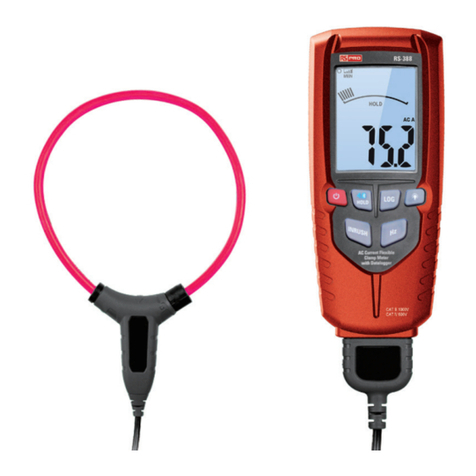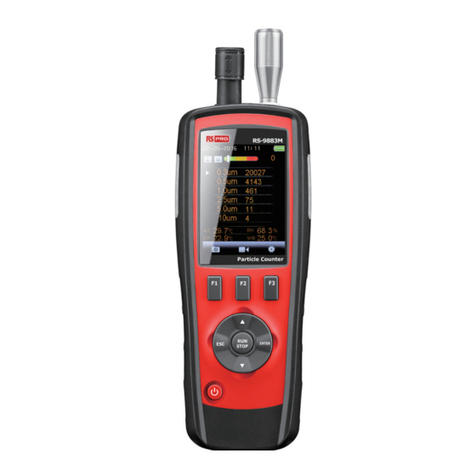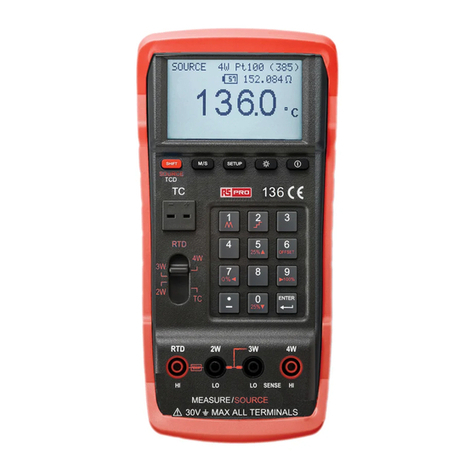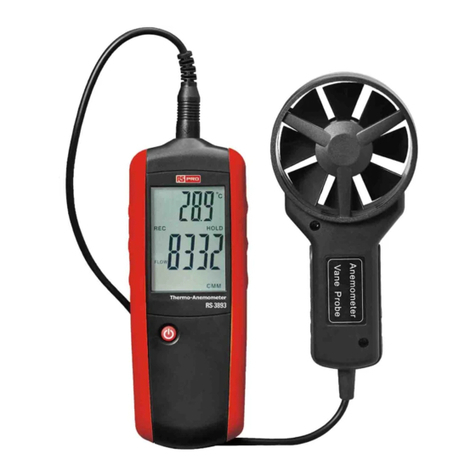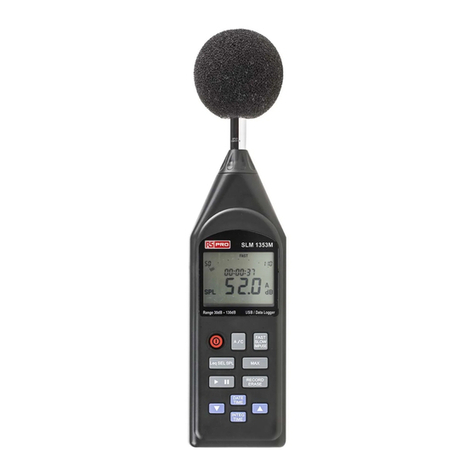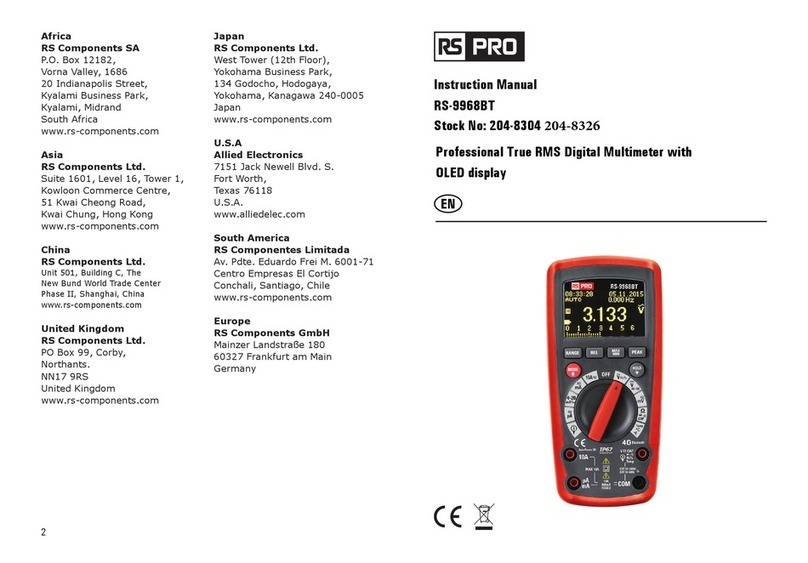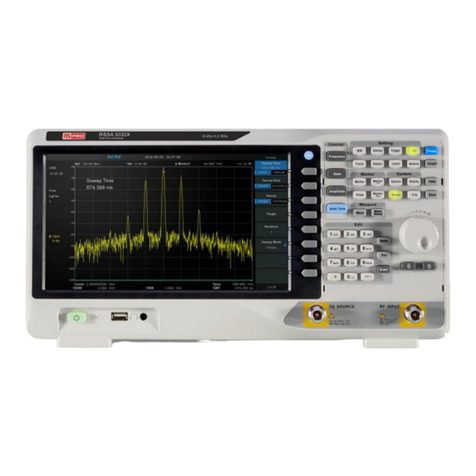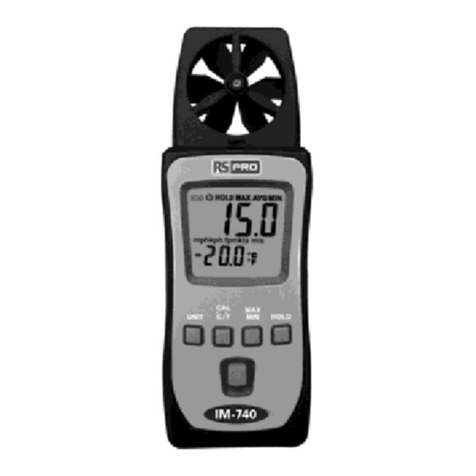
8 9
6. AUTORANGING/MANUAL RANGE SELECTION
When the meter is first turned on, it automatically goes into Autoranging. This automatically
selects the best range for the measurements being made and is generally the best mode for
most measurements. For measurement situations requiring that a range be manually selected,
perform the following:
1. Press the RANGE key. The “AUTO” display indicator will turn off.
2. Press the RANGE key to step through the available ranges until you select the range you want.
3. To exit the Manual Ranging mode and return to Autoranging, press and hold the RANGE
key for 2 seconds.
Note: Manual ranging does not apply for the Capacitance and Frequency functions.
MAX/MIN
Note: When using the MAX/MIN function in Autoranging mode, the meter will “lock” into
the range that is displayed on the LCD when MAX/MIN is activated. If a MAX/Min reading
exceeds that range, an “OL” will be displayed. Select the desired range BEFORE entering
MAX/MIN mode.
1. Press the MAX/MIN key to activate the MAX/MIN recording mode. The display icon
"MAX" will appear. The meter will display and hold the maximum reading and will update
only when a new “max” occurs.
2. Press the MAX/MIN key again and the display icon "MIN" will appear. The meter will
display and hold the minimum reading and will update only when a new “min” occurs.
3. To exit MAX/MIN mode press and hold the MAX/MIN key for 2 seconds.
DISPLAY BACKLIGHT
Positive Display and Backlight on when unit is turned on
MODE
Press MODE key the selection of double measured functions which are present at display
is possible. In particular this key is active in V/ / CAP/ Ω position to select among
resistance test, diode test, continuity test and capacitance test, and in current position to
select between AC or DC current measurements.
HOLD/ FLASH LIGHT
The hold function freezes the reading in the display. Press the HOLD key momentarily to
activate or to exit the HOLD function.
Press the HOLD key for >1 second to turn on or off the FLASH light function.The flash light
and will automatically power OFF after 5 minutes of inactivity.
AUTO POWER OFF
The auto off feature will turn the meter off after 15 minutes. To disable the auto power off
feature, hold down the MODE button and turn the meter on.
LOW BATTERY INDICATION
The icon will appear in the lower left conner of the display when the battery voltage
becomes low. Replace the battery when this appears.
WARNING: To avoid electric shock, do not operate your meter until the battery and fuse
covers are in place and fastened securely.
This MultiMeter is designed to provide years of dependable service, if the following care
instructions are performed:
1. KEEP THE METER DRY. If it gets wet, wipe it off.
2. USE AND STORE THE METER IN NORMAL TEMPERATURES. Temperature extremes can
shorten the life of the electronic parts and distort or melt plastic parts.
3. HANDLE THE METER GENTLY AND CAREFULLY. Dropping it can damage the electronic
parts or the case.
4. KEEP THE METER CLEAN. Wipe the case occasionally with a damp cloth. DO NOT use
chemicals, cleaning solvents, or detergents.
5. USE ONLY FRESH BATTERIES OF THE RECOMMENDED SIZE AND TYPE. Remove old or
weak batteries so they do not leak and damage the unit.
6. IF THE METER IS TO BE STORED FOR A LONG PERIOD OF TIME, the batteries should be
removed to prevent damage to the unit.
WARNING: To avoid electric shock, disconnect the test leads from any source of voltage
before removing the battery cover.
1. Turn power off and disconnect the test leads from the meter.
2. Open the rear battery cover by removing the screw using a Phillips head screwdriver.
3. Insert the battery into battery holder, observing the correct polarity.
4. Put the battery cover back in place. Secure with the screw.
22/11/2017 Version No.00122/11/2017 Version No.001
True RMS Compact Digital Multimeter/EnglishTrue RMS Compact Digital Multimeter/English
7. Maintenance
WARNING: To avoid electric shock, disconnect the test leads from any source of voltage
before removing the back cover or the battery or fuse covers.
BATTERY INSTALLATION
22/11/2017 Version No.00122/11/2017 Version No.001
True RMS Compact Digital Multimeter / EnglishTrue RMS Compact Digital Multimeter / English


